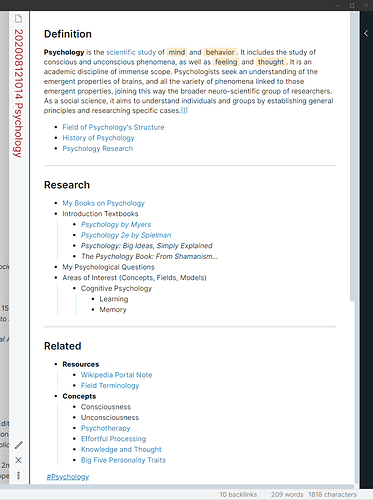I would consider “notes on Nietzsche” to be a perfectly valid atomic idea.
If you then had insights, projects, best-of quotes, or ideas that spawned from those notes, those could become their own atomic note. I can have a long note summarizing a book. And I can have a tiny separate note with a quote I love that inspires or informs me.
“a little unclear about how much to include”.
I see a lot of people trying to come up with note templates or clear rules. There’s nothing wrong about that. Systems and rules are fantastic!!! But here is a quote from “How to Take Smart Notes” when he is discussing what tools you need to have. And when you read “Computers”, also remember to think, “rules in your system”. (emphasis mine):
Computers can only speed up a relatively minor part of the work anyway, like adding links and formatting references. They can’t speed up the main part of the work, which is thinking, reading and understanding. - (Chapter 3.1)
I read that quote as “Apps, rules, systems, and excessive management, cannot replace the main part of the work, which is thinking, reading and understanding.”
And here is a note I wrote just this morning (emphasis mine):
Don’t throw any of yourself away. Don’t worry about a grand scheme or unified vision for your work. Don’t worry about unity—what unifies your work is the fact that you made it. One day, you’ll look back and it will all make sense.
- From [[Steal Like An Artist]] by Austin Kleon
This is interesting because, like in [[Back of The Napkin]], we scatter a bunch of stuff in front of us, and we can detect patterns. Things emerge.
But we don’t have to meticulously sort and manage it. We can trust in the process, and trust in our minds and creativity! Trust in the pattern-seeking mechanism of our minds, and trust in the [[Serendipity]] of just beginning to move.
Kleon’s quote is about deleting stuff or censoring ourselves based on who we think we are as an artist (I can’t write about X, I’m a Y.) But I also see it as referring to excessive rules or management, or fear of getting it “correct” or properly categorized. Austin Kleon would encourage us to try and to play. To trust our creativity and our minds to be able to find the patterns later.
Sorry if that was too tangential! That’s how I would think about your question.
